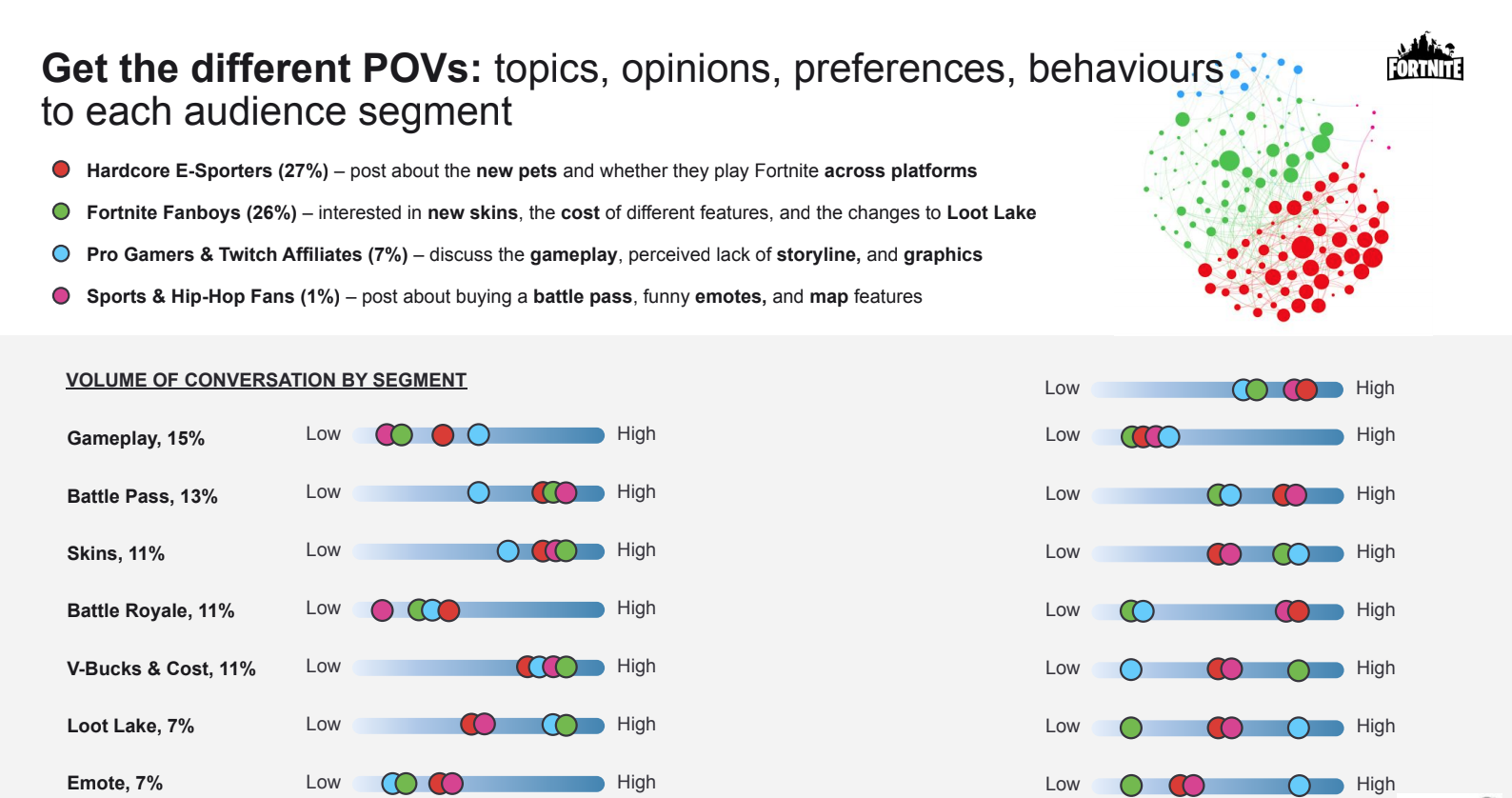Developing a niche marketing strategy using social media
One of the biggest challenges of a business is standing out in a sea of competitors. For that, you need something that sets your business apart from everyone else. Whether it’s offering a better deal or addressing a unique pain point, a niche marketing strategy can help you identify how you can differentiate your brand.
What is a niche marketing strategy?
First, let’s help you understand the concept of niche marketing by answering your question of what is niche strategy. Simply put, it’s a strategy that targets a highly specific group of people based on shared interests and/or pain points. In other words, niche marketing involves focusing on one specific segment of a larger market.
For instance, there may be many different niche segments within the market for laptop buyers. Some may want a laptop that can handle graphic-rich video games, while others may be looking for lightweight laptops that are great for travel. To appeal to both types of people, you’ll need a different product and a different message.
Understanding niche marketing segments
An effective niche marketing strategy starts with niche segmentation. A niche segmentation strategy involves breaking down a specific target market to narrow down on people dealing with certain pain points or having specific interests. The goal is to narrow down on an audience group or niche segments that might benefit the most from your product.
You can create different types of niche segments based on:
- Demographic and socioeconomic factors – You may create target segments based on age, gender, income, profession, marital status, industry, and education.
- Geographical factors – You may also create target segments based on where they live and identify any cultural characteristics that could be relevant for each segment.
- Behavioural factors – People’s online behaviour and shopping habits can also tell you how to segment them.
- Psychographic factors – Personality, beliefs, interests, and values are also important factors to help you build a relevant niche segment.
With MAPFRE, a global insurance company, their niche segmentation strategy involved identifying segments within the market of Pennsylvania-based millennials who’ve reached significant milestones in their lives such as buying a house, getting married or becoming parents.
They used social consumer segmentation from Audiense to identify six segments within this market based on gender and marital status. After this, they were able to profile each segment based on unique traits and attributes to identify the products and message types most relevant to them.

Why you need niche targeting in your marketing strategy
Focusing on specific niche segments in your marketing strategy allows you to set your business apart from the competition. It gives you the audience intelligence necessary to choose your unique selling point and deliver highly relevant messaging to your audience.
For example, there are plenty of streaming services in the market already, but not a lot of them offer foreign films and classic movies. So you decide to target cinephiles and film students by expanding your offering to include plenty of classic and iconic titles as well as foreign films and art-house and independent productions.
This can help your service become the go-to streaming destination for cinephiles and film students as is the case with The Criterion Channel.
.png?width=1731&name=The%20Criterion%20Collection%20-%20The%20Criterion%20Channel%20_%20All%20Films%20-%20Google%20Chrom..%202020-11-25%20at%2011.16.19%20AM%20(1).png)
So with a powerful niche marketing strategy, you can build a strong relationship with your audience and establish your brand as a market leader.
Using social media to develop a niche marketing strategy
With 500 million Tweets sent out per day and 995 photos posted on Instagram every second, it’s clear that conversations are increasingly taking place on social media. It’s where people spend a huge portion of their time interacting with others, which means it could tell you a lot about your niche segments.
You can then use all the insights you’ve collected to develop a niche marketing strategy. Here are a few tips to get you started:
1: Identify and segment your audience
First, start by identifying the audience you’ll be targeting with your niche marketing strategy. Ask yourself questions like – What problems does your product solve? Who will be interested in it? What kind of people will benefit the most from it?
All of this will help you get a better idea of what your niche segments should look like. Use the Audiense Insights platform to identify your target audience and narrow down on the most relevant niche segments.
.png?width=1334&name=insights-functionalities-2%20(1).png)
2: Track conversations and profile your niche segments
Social media conversations can tell you a lot about who your niche segments are – what they like, what moves them, what kind of topics they enjoy, and more. Use social listening tools in conjunction with audience intelligence tools to monitor conversations and uncover insights that will help you profile your niche segments.
The idea is to monitor what people are saying so you can group them into the right segments and find out which topics resonate with them. How do they feel about a certain topic? What kind of brands do they talk about? Have they shared any positive or negative brand experiences? What kind of topics do they talk about the most?
Profile each segment based on factors such as needs, values, and personality traits. You should also consider their online behaviours such as what content formats they prefer, which platforms they’re on, and when they’re most active. Then identify the topics that are most relevant to each niche segment to better narrow things down.
Audiense was able to narrow down on the opinions, preferences, and behaviours of different audience segments of Fortnite players. Hardcore e-sporters made up the biggest portion of the audience group and were most likely to post about new pets in the game.
Fortnite fanboys were interested in new skins and how much different features cost. On the other hand, pro gamers and Twitch affiliates mostly discussed gameplay, storyline, and graphics.

3: Eliminate false positives
Use your social listening and monitoring to look for and eliminate cases of false positives from among your niche segments. There may be instances where an individual supposedly fits into a certain niche segment, but this may not necessarily be true if you manually review their social media profile and take things into context.
For example, someone might label themselves as a “pet parent.” So their profile may turn up among the list of people to target if you’re building a niche segment of parents. Manually reviewing their profile and listening in on their conversations could help you delete these false positives and build a cleaner, more accurate niche segment.
4: Develop your messaging
Use your profiling from earlier to identify the products and messaging most relevant to each niche segment. Then create a niche marketing strategy for each segment based on their content preferences, interests, and online behaviour.
For one niche segment, you may distribute your messaging through fun and engaging videos on YouTube. For another segment, trustworthy and professional testimonials on Facebook and LinkedIn may be the type of messaging that resonates best.
Ready to start building your niche marketing strategy? Try Audiense Insights for free.





.png?width=60&name=image%20(62).png)
